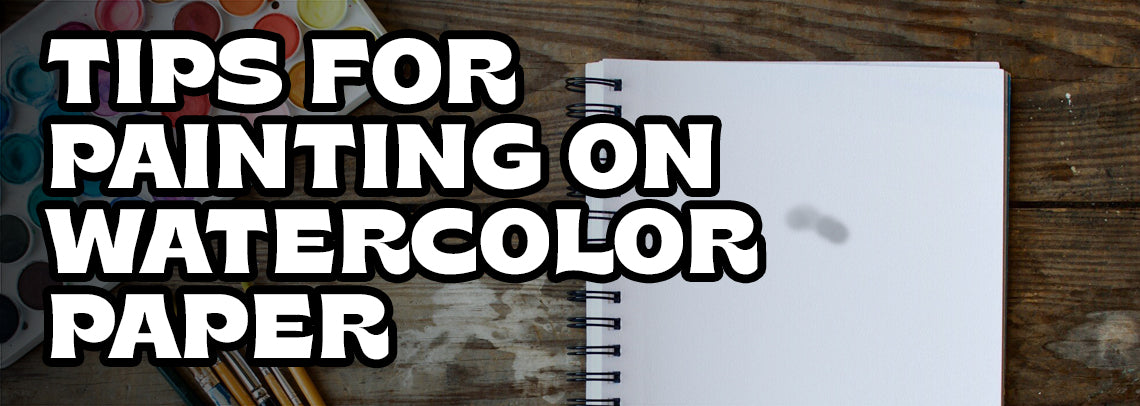Is it time for you to move up from all-purpose paper to watercolor paper? When you decide that you're ready for the real deal, it can be hard to figure out how to get started.
How can you make the most of your new watercolor paper? How can you find the right watercolor paper for you? Can you avoid rookie mistakes, or are you fated to make them regardless of what you do?
We're here to offer advice. Keep reading to learn all about how to use watercolor paper the right way.
Choose the Right Watercolor Paper
Did you know that there are multiple types of watercolor paper? While beginners may be used to simple all-purpose art paper, cardstock, or watercolor paper from the craft section of big-box stores, when you get to higher-quality paper, there are options.
You need to find the best watercolor paper for you and your project. Some people prefer one kind of the other for all of their paintings while others switch back and forth depending on what they're doing.
The two primary categories are hot press watercolor paper and cold press watercolor paper.
Hot-pressed watercolor paper is smooth. While it does have texture to it, it's not as obvious as the texture of the cold-pressed watercolor paper. This paper is great for people who start with pen and ink drawings and plan to use only a few washes of color.
Cold-pressed watercolor paper is rougher in texture. It's more popular amongst people who often paint with watercolor because it can handle more paint and it's good for detailed paintings.
The watercolor paper also comes in different weights. Heavier paper is good for layering paint while the lighter paper is best for simple paintings or practice.
Find the right watercolor paper texture and weight before you start your painting.
Test Paints First
Once you have your paper, it's a good idea to test out your paint and painting style before committing to something large. Remember, different types of paper will react differently to watercolor paint.
Cut a small piece of paper from your sheet and swatch all of your colors with the amount of water that you intend on using. You might discover that the paper doesn't react the way that you expect, meaning that you'll need to make some adjustments.
When you test ahead of time, you won't have as high of a risk of messing up while you're painting your art.
Know the Appropriate Amount of Water
Different artists and art styles work with different amounts of water. As we mentioned, different types of watercolor paper can also handle different amounts of water.
While you're testing your paint, also test your water levels. You can even test this without paint if you want to conserve it.
You don't want to soak your paper. It's best to use light washes of paint unless you're aiming for a specific style of watercolor painting. Some people paint "wet on wet," which requires more water.
This will be a trial and error process, but it's best to get it out of the way before you start painting on expensive watercolor paper.
Practice and Sketch Beforehand
Speaking of practicing and making your errors beforehand, it's a good idea to practice and sketch on sketch paper before you start painting your final piece. While paint won't react the same way on this cheaper paper, you'll be able to get an idea of where to place colors.
When you use watercolor paints, you can't go in and change things once the paint is down. Unlike acrylic, watercolor paint leaves a sheer wash of color. Adding too much on top can make the painting look muddy.
If you have the funds, consider getting a projector for your paintings. This allows you to sketch and do basic linework on a separate piece of paper and then transfer it to your final watercolor paper with ease. This way, you can avoid any silly mistakes.
Don't Overwork the Painting
Many people who aren't used to working with higher-end watercolor paper don't understand how easy it is to overwork a painting. They may already be used to affordable paper that they know will bend, but this doesn't have to be the case if you're careful.
When you're painting, use light washes of paint, especially if you plan on using several layers. You're going to be painting backward with watercolor, meaning that you're going to go from light to dark.
Anyone who knows anything about other forms of painting might balk at this idea, but consider how watercolor paint functions.
The only white in watercolor comes from the paper itself. It's not easy to lighten colors once they're on the page. Because of this, you can't layer light colors over dark ones.
You also need to designate white areas before you start painting.
If you keep these things in mind, you can avoid overworking your piece. This helps you prevent the paper from warping and prevents muddy results.
Observe the Pros
There is no such thing as a self-taught painter. While we generally use "self-taught" to mean "never received an art education," in reality, people learn by observing other artists and looking at art that they enjoy.
In this way, they're learning, even if it's not in a professional setting.
When you observe professionals on YouTube videos or even look at old professional work in museums, it's easier to see what you should and shouldn't do for your own artwork.
Start Your Painting Journey Today
With these tips in mind, you're ready to start using high-end watercolor paper. Move beyond the amateur paper at the local big-box store and see the difference that it makes in your artwork.
Are you interested in buying high-quality art supplies for your next project? At Hippie Crafter, we pride ourselves on the quality of our supplies. Check out our products today.






